In Ithaca
In the spring of 1828 Ezra Cornell arrived in Ithaca, the town he would make his permanent home. Ithaca in the 1820s was a growing community. Water from the creeks powered lumber, flour, plaster, paper, cotton, and woolen mills. The State Legislature had chartered the Ithaca and Owego Railroad, and there was talk of a canal link to Lake Ontario. Cornell first found work as a carpenter, before being hired as a mechanic by Otis Eddy to work at his cotton mill on Cascadilla Creek. On Eddy’s recommendation, Jeremiah S. Beebe then hired Cornell to repair and overhaul his plaster and flour mills on Fall Creek. During Cornell’s long association with Beebe, he designed and built a tunnel for a new mill race on Fall Creek; a stone dam on Fall Creek, which formed Beebe Lake; and a new flour mill. By 1832, he was in charge of all Beebe’s concerns at Fall Creek. In the 1830s, Cornell also became active in local politics and speculated in real estate.
Ezra Cornell married Mary Ann Wood on March 19, 1831. He bargained with Beebe for a building lot and acreage for a garden and orchard at Fall Creek, where he built a one-and-a-half-story frame house. In this house, called “The Nook,” Ezra and Mary Ann began housekeeping in the summer of 1831. “The Nook” remained their home for more than twenty years, and nine children were born there. Of these, three sons died in infancy, and the eldest daughter died at fifteen. Three sons and two daughters grew to adulthood.
 |
Henry Walton. East View of Ithaca, Tompkins County, N.Y. Taken in September, 1836. Hand-colored lithograph, 1836. [zoom] Inscribed: “Drawn from Nature and on Stone by H. Walton/Bufford’s Lithography, 114 Nassau St., N.Y.” On loan from the Herbert F. Johnson Museum of Art |
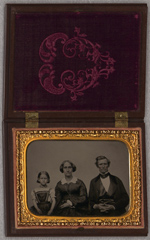 |
Ezra and Mary Ann Cornell with their daughter Emma, 1857. Ambrotype and case. [zoom] | Additional images: 
In 1832, Cornell wrote to a friend: I have always considered that choosing a companion for life was a very important affair and that my happyness or misery in this life depended on the choice . . .
|
 |
Ezra Cornell’s Tunnel, ca. 1868. [zoom] In 1861, Cornell reminisced: The summer of 1830 I . . . blasted the tunnel through the rock to take water from the dam above the falls for the mill . . . In 1831 we lowered the tunnel four feet, and built a new dam across the creek.
|
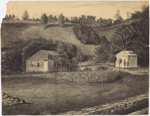 |
“The Nook,” ca. 1920. Chalk drawing by an unknown artist. [zoom] |
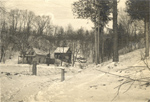 |
“The Nook,” ca. 1930. Photograph. [zoom] |
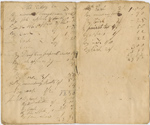 |
Ezra Cornell’s early account with Otis Eddy, 1828. [zoom] |
 |
Ezra Cornell’s early account with Jeremiah S. Beebe, 1830. [zoom] |
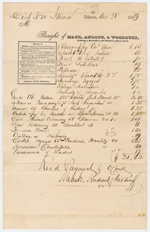 |
Mack, Andrus & Woodruff, Booksellers. Receipt for purchases made by Ezra Cornell. Ithaca, New York, December 28, 1839. [zoom] |
 |
Ezra Cornell. Bank draft to Peter Dunham. Bank of Ithaca, New York. September 12, 1835. [zoom] |